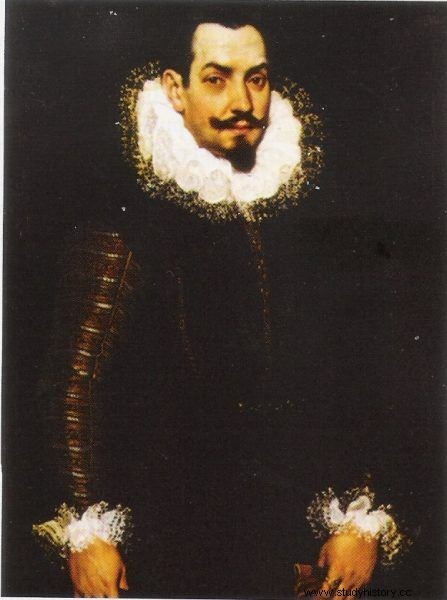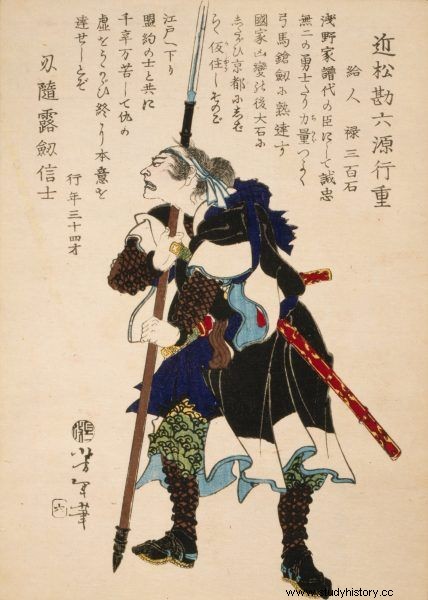The history of many nations has its own Thermopylae. Even those that are rarely talked about, and often occupy the minds of history enthusiasts only. It was no different with the Spanish colonial empire. Here is the sun that never set over it, met another, this time the rising sun of a new player in the international arena - Japan.
The 16th century is the time of true Spanish hegemony in the waters of the world. It confirmed its enormous ambitions throughout the entire period of geographical discoveries, gaining vast domains on four continents. Its merchant fleet carried in its holds countless amounts of gold, silk and spices, many times more expensive than precious metals.
Vast empire and riches aroused fear and envy all over the world. From the kingdom of France, through the Ottoman Empire, the Mediterranean basin, the Indian Ocean, to pirates in the Caribbean and East Asia - amateurs of Spanish prosperity lurked everywhere .
Japanese or Chinese?
It was no different in the distant Philippines. Colonized from 1565 by the Spaniards, this area quickly became a center of business exchange between the colonists and the Japanese. This exchange particularly flourished around 1573, and all would have been fine had Tay Fusa and his wakō pirates not interfered with the business. It is believed that both the commander and his companions were Japanese. However, linguists point to the little Japanese sound of the name Tay Fusy, suggesting its more Chinese origin.
The very name wakō has also created some confusion. The Chinese used this term to describe the pirates ravaging the shores of the Middle Kingdom, Korea and the waters of the Chinese Sea. And the wa particle indicates Japanese origin (the term Japan is the country of Wa). In addition, the Chinese sources also use the term wōkòu , which in turn means a dwarf bandit, and the word wō itself was a very pejorative phrase towards the Japanese. However, today it is known that the wakō ranks were joined not only by the inhabitants of the Land of the Rising Sun, but also by the Chinese, Malaysians and Europeans.> .
Pirate problem
The Spaniards also suspected that Tay Fusa's forces were privateers, perhaps operating in the majesty of the Japanese Emperor Ōgimachi or one of the Japanese feudal lords. Whatever the invaders were, the fact is that in 1580, Tay Fusa invaded the province of Cagayan on the northern tip of Luzon Island and forced the inhabitants to submit to his rule. In response, the Governor-General of the Philippines, Gonzalo Ronquillo de Peñalosa, delegated the navy and the royal army to solve the pirate problem. The threat was taken very seriously. From the governor's letter to King Philip II, we know that the Japanese (sic!) Were seen as an extremely militant people, possessing artillery, marksmen, pikemen and wearing armor. Worst of all, this was largely ensured by Spain's ancient enemies - the Portuguese.

Juan Pablo de Carrión led the Spanish anti-piracy troops
The punitive expedition was headed by Juan Pablo de Carrión. He was not a professional soldier or a person with extensive combat experience, but he was the only one with the appropriate rank and was simply at hand. Therefore, there were concerns as to whether he would cope with this task, the more so as he had only 60 tercios soldiers and about 1,000 sailors, as well as people from local auxiliary units. Meanwhile, Tay Fusa could count on over a thousand of pirates hungry for riches and blood. Undeterred, however, Carrión loaded his forces into 7 ships, including only one well-armed galley, and in June 1582 headed north of the island of Luzon.
Skirmishes with pirates
Soon, the Spanish flotilla encountered the lone vessel Tay Fusy, which she had demolished with a fire superiority. Soon another pirate ship appeared on Carrión's expedition course. This time, however, the fire of the cannons was not enough and the flagship galley of the Spaniards stood side to side with a huge wakō sampan. Boarding took place and the Spanish Rondeleros found themselves face to face with armored Ronin (stray samurai, many of which were in the pirate ranks). Rapiers and katanas went in motion, and arquebus orbs rattled like a ghastly swarm of wasps. However, the pirate pressure turned out to be so great that Carrión's soldiers had to withdraw with the enemy on their necks on board their unit. Only here they regrouped their forces and by creating an impenetrable wall of pikes and strong musket fire, they managed to stop the advancing pirates.
The fight was fierce, and only the experience and better combat training of the Spaniards allowed them to survive this maddening attack. Soon, another ship of the Spanish flotilla came to the rescue and swept the pirates off the deck with the fire of the cannons. Many of them, saving themselves, jumped into the sea, but the weight of the armor dragged them to the bottom.
These victories inspired Carrión's fleet to reach the mouth of the Tagus River, also known as the Rio Grande de Cagayan, in mid-June. There, 18 pirate units and a fort manned by 600 Tay Fusy warriors were found. The Spaniards managed to break through the light wakō ships, destroying most of them in the process.
Final Showdown
Carrión decided to disembark soldiers and some sailors and prepare defensive positions. Soon the Spanish ramparts became covered with dense gunpowder smoke - the guns removed from the ships started the murderous fire at pirate positions. Tired of bombing wakō, they offered to leave in exchange for generous payment for their losses. The Spanish commander rejected the offer, demanding unconditional surrender and leaving Luzon. Tay Fusa, in turn, did not agree and the cannons came to the fore again.

The pirates fiercely defended themselves against the Spanish troops
Regardless of the Spanish bullets, the pirates, confident in their numerical superiority, launched a frontal attack. The attacks repeated three times brought more bloody losses to the soldiers of Fusa. Having learned from previous clashes, the Spaniards had cautiously oiled the blades of their spades to prevent their enemies from catching them. The bustling shooters showered the pirates with iron and lead.
Death, however, also took its toll in the Spanish ranks. After the third attack, only 30 soldiers remained in the trenches, running out of gunpowder and ammunition. In the absence of any prospects for any support, Carrión decided to go into counterattack. In full discipline and order, the pride and pride of the Spanish crown emerged from the ramparts - the decimated and exhausted tercios soldiers, the vanquishers of the world's armies, launched their final attack. This time, reson left the ranks of the wakō, who, having abandoned their weapons, surrendered the rear.
The Spanish commander did not stop there, and pursued them, eventually breaking up Tay Fusa's forces. He himself, having lost about 800 people in the battle, disappeared from the pages of history, and the activity of dwarf bandits in this area declined significantly for many years.
